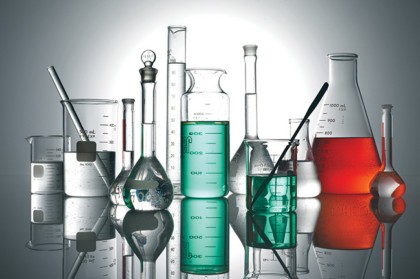
Peroxide is typically thought of as something hairdressers use to lighten hair, but you’ll also find a bottle at your local chemist – for about $5 – being advertised as a mild disinfectant or throat gargle.
In its natural form, hydrogen peroxide is found in breast milk, rain and, crucially, the body’s own immune cells. According to Dr Joseph Georghy from North Shore Cosmetic in Sydney, “It’s the body’s first line of defence against every type of infection.”
For those who slept through science class, hydrogen peroxide (H202) is essentially water (H20) with an extra oxygen atom. Your own white blood cells make some hydrogen peroxide as a way of killing invading nasties such as fungi, viruses or cancer.
Dr Frank Shallenberger, founder and director of The Nevada Center of Alternative & Anti-Aging Medicine in the US, says that when hydrogen peroxide is used as a therapy, it can help your immune cells do the job they were assigned. “It’s been used for decades to conquer viral infections by thousands of doctors in thousands of patients all over the world,” he adds.
Infection fighter
Hydrogen peroxide is commonly used throughout Eastern Europe, as a mouthwash, disinfectant and in root canal therapy. “Dentists will use a tiny needle to inject the tooth canal with hydrogen peroxide to stop infection,” Slovenian-born Georghy says.
Research published in the Journal of Clinical Periodontology shows it can help prevent plaque and gingivitis, and a diluted form is commonly sold as a mouthwash. Other dental experts claim it can be an effective disinfectant for cleaning your toothbrush.
If making your own mouthwash, b+s holistic GP Cris Beer says it’s crucial to use the right dilution (see box, right) of a 3 per cent food or pharmaceutical grade formula, but says you should only use it a few times a week at most “due to its potential to cause tooth sensitivity”.
Cancer cure?
Hydrogen peroxide’s use as an alternative medicine for chronic illness is a lot more controversial.
Georghy uses an intravenous form of 3 per cent hydrogen peroxide on patients suffering from viral infections and chronic fatigue, and administers the solution slowly, over 30-60 minutes. “We order from a TGA-approved company in Melbourne and I personally know the pharmacy making it,” he says.
Shallenberger says that breathing hydrogen peroxide through a nebuliser (which converts liquid into a fine mist) is ideal for fighting viral illnesses in general: “I’ve never seen it fail; I’ve treated everything from flu and viral pneumonia to encephalitis and West Nile virus all with the same result – the infection clears and there are no side effects.”
The internet is rife with stories from people claiming that hydrogen peroxide helped them heal from cancer. However, Beer says that using it in IV form for cancer treatment “hasn’t been proven as an entirely safe and effective treatment approach”.
Georghy says some people have reported “miraculous results”, but is quick to add that he doesn’t use it for his cancer patients, and while there are practitioners in Australia who do use IV H202 as a cancer treatment, none were willing to be interviewed for this article.
In 2001, researchers at the Department of Life Sciences at Nottingham Trent University in the UK injected hydrogen peroxide solutions into solid tumours in mice, and concluded that it was a potent agent: “Hydrogen peroxide can act as an anti-cancer drug with two distinct advantages over conventional therapeutic agents – it produces minimal short- and long-term side effects and is relatively cheap and cost-effective.”
However, the official view of the Australian Medical Association is that hydrogen peroxide is “dangerous” as an alternative therapy for serious illnesses. Meanwhile, the American Cancer Society says some studies have found success in using hydrogen peroxide in small quantities to clean and disinfect wounds, but its view is that there isn’t enough available scientific evidence to support claims it can cure cancer in humans, adding that some treatments can be dangerous.
Safety warning
Used in careful concentrations, hydrogen peroxide has been shown in studies to be safe and non-toxic. However, it becomes corrosive at 10 per cent (it’s used in industry at strengths of more than 30 per cent to bleach paper and produce rocket fuel).
If swallowed, it can cause burning of the throat and stomach, and evendeath, so it’s crucial to use the correct dilution. Best practice is to consult a medical practitioner before use.
Common uses for H202
1. Mouthwash
You can make this by diluting a 3 per cent formula 50:50 with water (Colgate Peroxyl is an already diluted product), but Beer says it can cause tooth sensitivity.
WARNING: Hydrogen peroxide is corrosive above strengths of 10 per cent and can be fatal if ingested.
2. Chopping board cleaner
It effectively kills bacteria on wooden boards. To do it, wipe the board with vinegar, then repeat with 3 per cent hydrogen peroxide, let it fizz for a few minutes, then rinse thoroughly.
2. Wound disinfectant
The American Cancer Society says it’s commonly used in small quantities to clean wounds, however, various studies suggest it can also slow the healing process by damaging the healthy cells.
Source: bodyandSoul
 We are sharing information for knowledge. Presented by. SocialDiary.Net
We are sharing information for knowledge. Presented by. SocialDiary.Net



